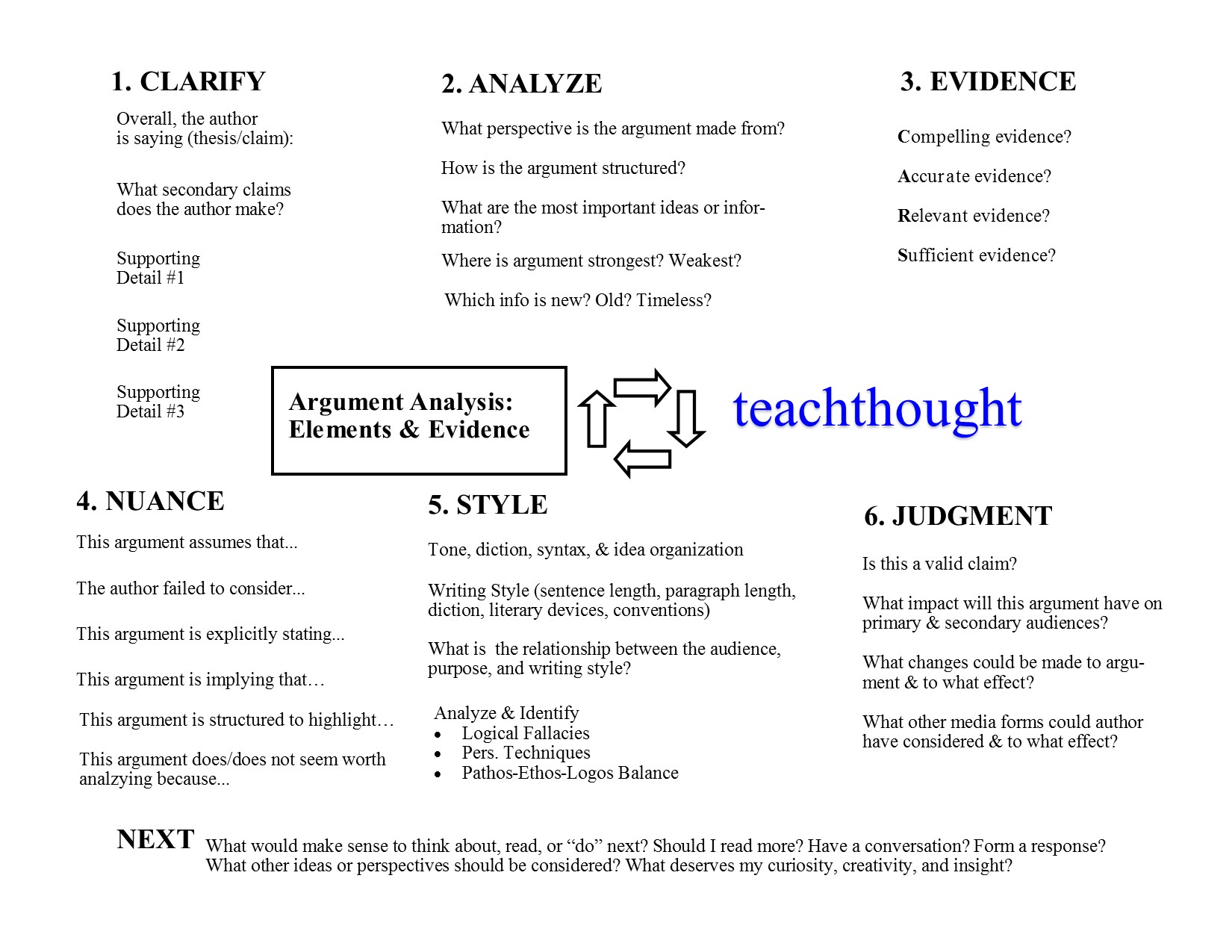A 6 Step Process For Teaching Argument Analysis
by Terry Heick
How “basic” this is depends on who your audience is, but this is more of an overview to help students systematically look at an argument piece by piece–and these are the pieces.
This is one of the organizers I use as a teacher–there’s a lot here, from thesis to tone, pathos/ethos/logos to implicit/explicit, audience awareness to media form, to “next steps” that ask students to consider the “So? So what? What now?” closure of any learning experience.
Audience
Primary audience would be English-Language Arts students in grades 8-12, but it makes sense to promote this kind of thinking in all content areas, even in simpler form starting in late elementary school.
Purpose
Students could use something like this to analyze formal or informal arguments, from love songs to political manifestos, from the Declaration of Independence to speeches, advertising pieces, essays, and more. The more it is used, the more comfortable they’ll get with the nuance of the structure of the 6 step process, which appears below.
1. Clarify
Big Idea: Making sense, in full, of what the author is “trying to say” (thesis/theme).
2. Analyze
Big Idea: Seeing all of the “parts” of the argument, and where each is strongest/weakest.
3. Evidence
Big Idea: Noticing which parts of the argument are supported and to what effect?
4. Nuance
Big Idea: See what’s said both explicitly and implicitly.
5. Style
Big Idea: Understanding how the writing style affects the argument.
6. Judgment
Big Idea:Judging whether or not the argument is valid.
A 6 Step Process For Teaching Argument Analysis
